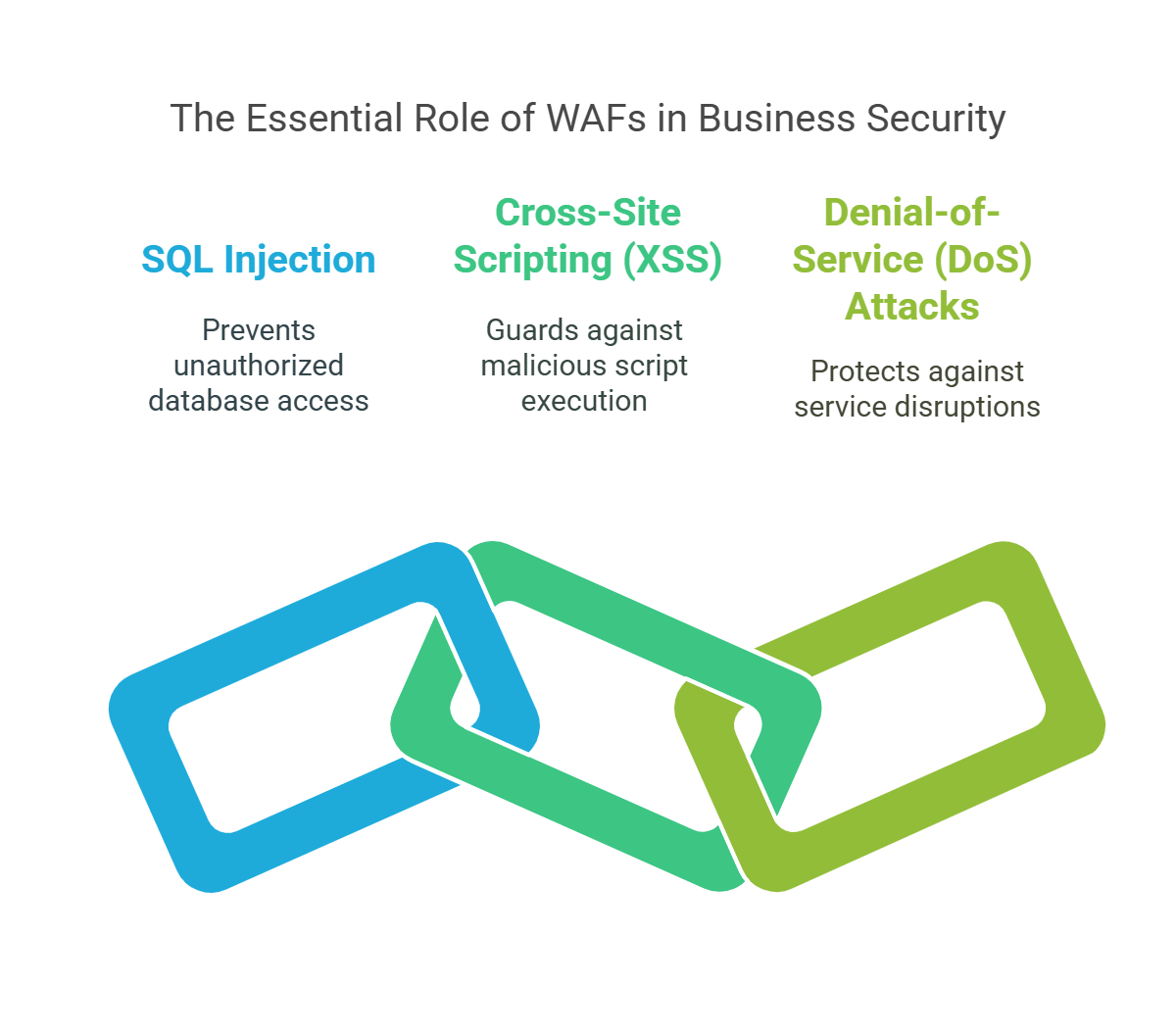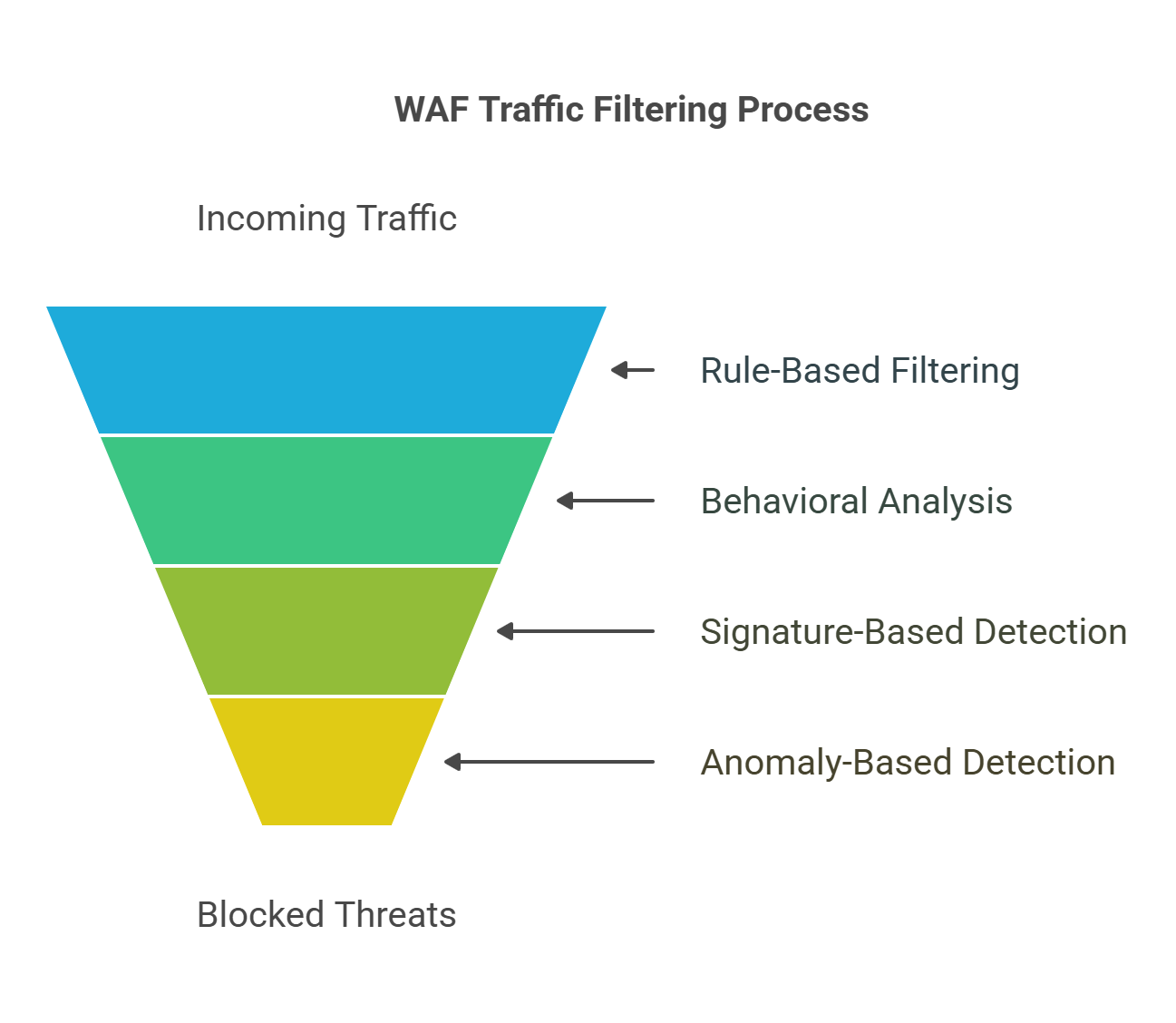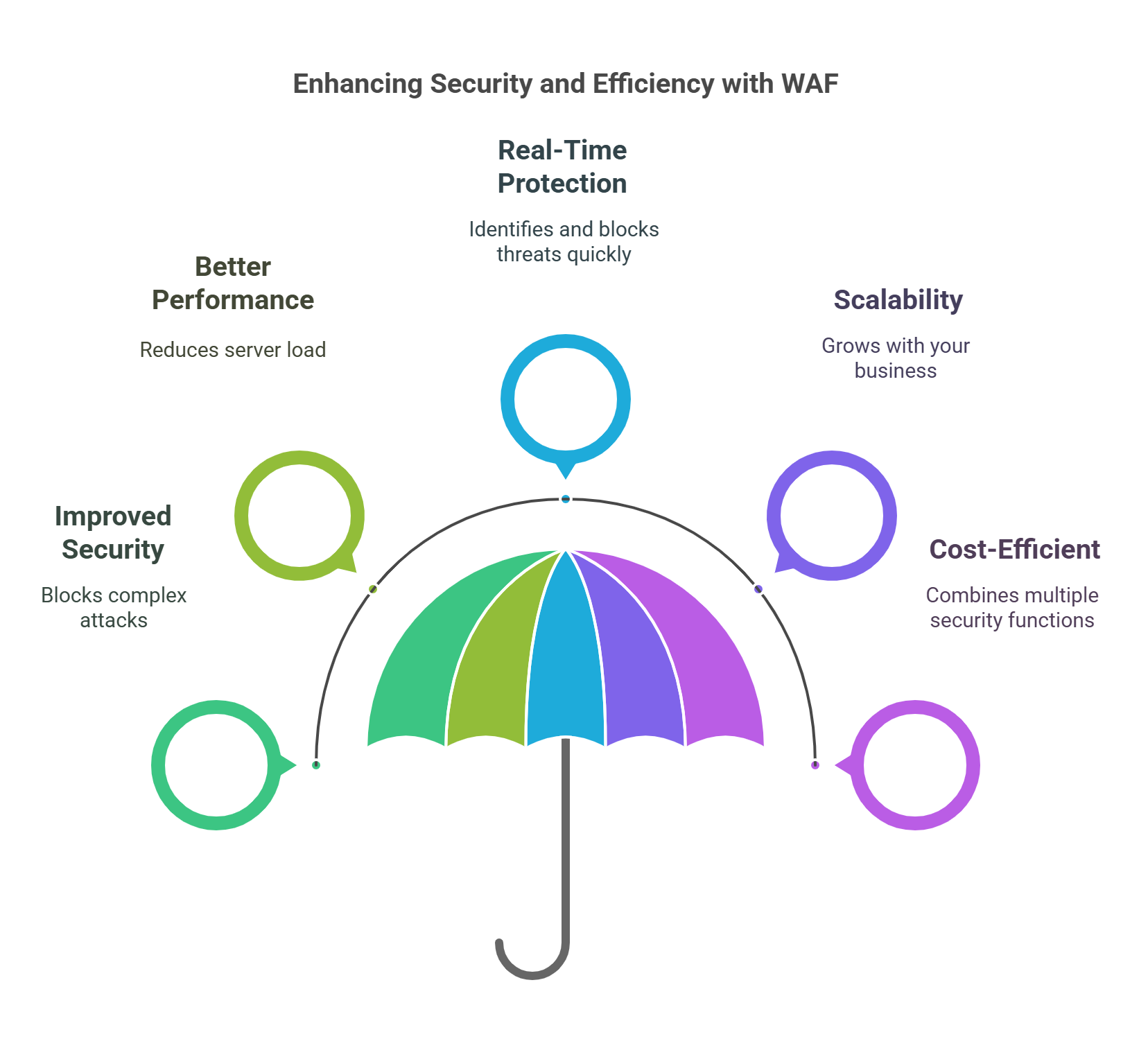Why WAFs Are Crucial for Your Business
The digital world is expanding, and businesses rely on web applications more than ever. Whether you’re running an e-commerce platform or a personal blog, keeping your web apps secure is essential. Web Application Firewalls (WAFs) defend these apps from threats like SQL injection, cross-site scripting (XSS), and denial-of-service (DoS) attacks.
This article will help you understand what WAFs are, how they work, and why they are vital for your business. Read on to learn how a WAF can protect your assets online.

What Is a Web Application Firewall (WAF)?
Definition and Function
A WAF is a security tool that monitors and filters the traffic to web applications. It protects your application from harmful attacks targeting vulnerabilities. Unlike traditional firewalls, which defend against network-level attacks, WAFs specifically target web applications.
By examining web traffic and applying rules, a WAF blocks harmful activities, acting as a protective shield for your application.
How WAFs Work
WAFs defend your applications using different methods:
-
Rule-Based Filtering: WAFs block traffic based on known attack types, like SQL injections and XSS.
-
Behavioral Analysis: Some WAFs use machine learning to detect suspicious activity, even if it’s a new attack.
-
Signature-Based Detection: WAFs match incoming traffic with known attack signatures to block threats.
-
Anomaly-Based Detection: WAFs check for unusual traffic patterns, alerting you or blocking harmful requests.

Why You Need a WAF
Protect Against Threats
-
SQL Injection: Blocks malicious SQL inserted into your database queries.
-
Cross-Site Scripting (XSS): Stops scripts that steal data or logins.
-
Cross-Site Request Forgery (CSRF): Blocks fake user requests.
-
DoS and DDoS Attacks: Prevent bots and traffic spikes from overwhelming your server.
-
Zero-Day Exploits: Uses behavioral analysis to detect new vulnerabilities.
Compliance Requirements
WAFs help meet standards like:
-
PCI DSS: For businesses dealing with payment data.
-
GDPR: Protects personal data in the EU.
-
HIPAA: Secures healthcare information.
Types of WAFs
Cloud-Based WAFs
Cloud WAFs like Cloudflare WAF and AWS WAF offer protection without hardware.
On-Premise WAFs
On-premise WAFs like F5 BIG-IP give more control but need more upkeep.
Hybrid WAFs
Hybrid WAFs combine both cloud and on-premise features, ideal for larger businesses.
WAF Benefits
-
Improved Security: Blocks complex attacks.
-
Better Performance: Reduces server load by filtering bad traffic.
-
Real-Time Protection: Identifies and blocks threats quickly.
-
Scalability: Grows with your business.
-
Cost-Efficient: Combines multiple security functions, saving costs.

Common WAF Deployment Models
Inline (Reverse Proxy) Mode
The WAF filters all traffic before it reaches your server.
Out-of-Band (Monitoring) Mode
The WAF monitors traffic for threats, typically used for reporting purposes.
WAF vs Traditional Firewalls: Key Differences
Traditional Firewalls
-
Block unauthorized network access.
WAFs
-
Focus on application traffic, blocking attacks like SQL injections and XSS.
FAQ: Web Application Firewalls
What Does a WAF Protect Against?
WAFs block attacks like SQL injections, XSS, CSRF, DoS, and more.
Can WAFs Stop All Attacks?
WAFs are essential but should be used with other tools like antivirus and IDS.
Are WAFs Necessary for Small Businesses?
Yes, especially for businesses handling sensitive data or online transactions.
Conclusion: Protect Your Web Applications
A WAF is critical for safeguarding your web applications from online threats. Whether you’re managing a blog or running an e-commerce site, a WAF boosts security and site performance.


